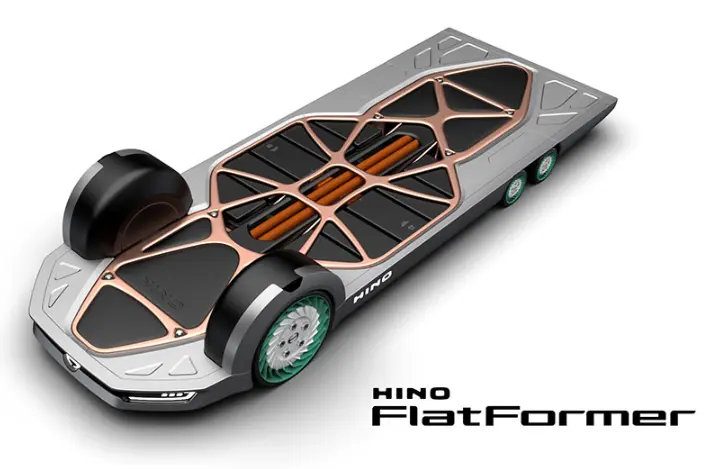By Daniel Barel, co-founder and CEO of REE on
The automotive industry is changing faster than it has ever done before. Major OEMs are investing enormous amounts of money in electric vehicles and many new, non-traditional players are emerging. The exponential growth in e-commerce is just the beginning of a major shift in shopping and services habits that are transcending into a new approach: ‘mobility as a service’ (MaaS). Daniel Barel, co-founder and CEO of REE explains how its innovative platform is the ideal solution.
The future is electric, but we live in a strange era where, for the first time in a century, we cannot foresee how a car will look or even what service it will provide in 10 to 15 years as we are on the verge of an explosion in the types of vehicles required to fulfill a range of uses.
But is the electric car flexible enough to meet these new demands? And if not, is there another way? If you look at current EVs, you will see that concept-wise, they are still mostly based on century-old concepts. And by this, I mean the platform they sit on. Do we want to build the future of mobility on ancient concepts?
For an OEM, the platform is often the single biggest technical investment they make – billions are spent designing and developing these architectures to carry only a handful of body styles at best. But even the latest OEM EV still has its legacy in the ICE layout, with electric components placed between the wheels, taking up valuable space. The battery may be flat and located in the center floor of the platform, but versatility is limited to this area because of legacy thinking, because the automotive world is used to thinking in incremental changes rather than deep disruption.
What if you could start from a blank sheet of paper and totally redesign it? What if you could come up with a truly, modular and scalable platform that could support not just today’s requirements for electric vehicles, but the next 100 years?
At REE, we have designed a next-generation EV platform, packaging all traditional vehicle components (steering, braking, suspension, drive, thermal and power management) into the wheel housing – the REEcorner. Why would we go and do such a thing? Well, if all drive components are placed off the chassis and into the wheel housing, all that is left is to attach a big, completely flat and scalable battery: the REEboard.
The benefits are enormous. Having a completely flat platform takes away most body design limitations, it brings total design freedom; from passenger EVs to sports cars, robo taxis, last mile delivery vehicles, autonomous vehicles (REE is autonomous-ready) and even larger trucks, REE can carry any type of design. Finally, there is no need to compromise on functionality or capability for the sake of efficiency, finally it is possible to create mission-specific electric vehicles that are purpose-built in a way that would be impossible using current thinking and all that without breaking the bank.
Let’s imagine the example of a global delivery company. Right now, its fleet is made up of traditional vans of various sizes, makes and kinds that deliver packages all over the city. But in the very near future, zero emission zones will mean it will need an entirely EV fleet. It doesn’t make sense to build a fresh EV fleet made out of so many different vehicles and components, which do not perfectly fit the ultimate potential usage. It doesn’t make sense to buy custom-made vehicles when you can build a fleet of tailor-made vehicles at a fraction of the cost.
REE
Using existing technology, our example global delivery company would need to go to multiple manufacturers to create such a fleet – but even assuming its needs could be satisfied, the result would be a high cost per package and the inability to scale the business quickly. The answer is a single platform that can truly do everything.
And compared to an existing architecture, REE has a 67% smaller footprint for the same interior space. REE vehicles take up less room on our crowded roads, while more capacity means fewer journeys. Fewer journeys means reduced overheads, with less need to recharge the vehicle, reducing energy requirements, saving our planet’s precious resources.
Maintenance is also reduced and downtime slashed because each REEcorner can be replaced in less than 20 minutes. Overall costs are dramatically lower too, because REE can be built faster and more efficiently.
We have already partnered with many leading OEMs and Tier 1s, around the world to ensure global capacity with access to more than 300 global production lines.
Carrying the future of e-mobility is a worthy goal that requires a revolutionary approach. in order to drive a deep disruption in e-mobility you have to be able to flow and take any shape.


